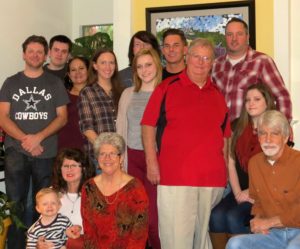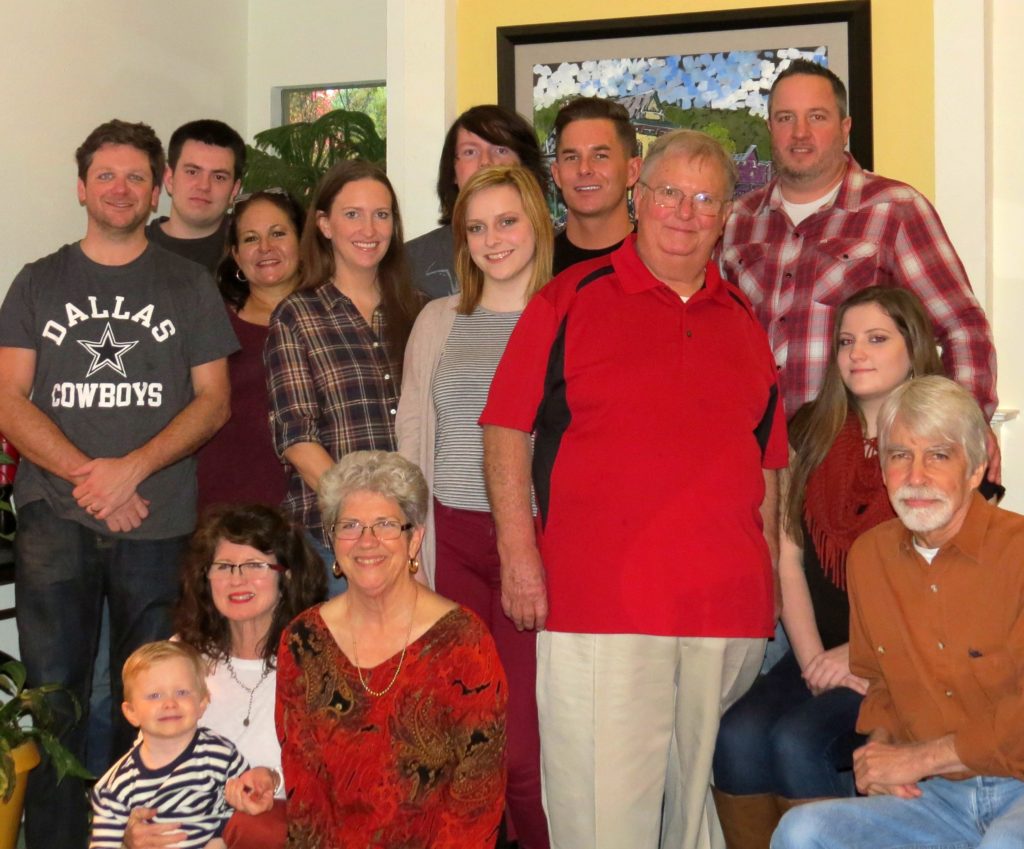Samuel Augustus Maverick survived the Battle of the Alamo because on February 1, 1836, the men of the Alamo elected Sam and Jesse Badgett to represent them at the signing of the Texas Declaration of Independence. Sam and Jesse were at Washington-on-the-Brazos when the Alamo fell. Continuing to fight for Texas independence, Sam was captured by Mexican troops in 1842 and put in Perote Prison in Mexico. Prisoners were kept under ball and chain, except when they worked in the quarries. Waddy Thompson, US Minister to Mexico, wrote Sam that if he said he was in favor of the re-annexation of Texas to Mexico, Santa Anna would release him. Sam replied: ‘You say Santa Anna will release me if I say I am in favor of re-annexation on any terms that would be advantageous to Texas. Any terms made by the Mexicans would not be of any advantage to Texas and I therefore cannot say so for I regard a lie as a crime and one which I cannot commit even to secure my release. I must therefore continue to wear my chains, galling as they are.’ He was released seven months later. He died in San Antonio in 1870.
Photo of Ellen (Sam’s great-great granddaughter) and her sister Molly with some of their family.

Samuel Augustus Maverick was born July 23, 1803 in Pendleton, South Carolina and died September 2, 1870 in San Antonio, Texas. Called “Gus” by his family and “Sam” by his friends, he studied law under Henry St. George Tucker at Winchester, Virginia, and graduated from Yale in 1825. At that time the question of the day in the South was secession. A tariff had been imposed on manufactured good from the South by Northern congressmen, this serving to the advantage of Northern industry while restricting manufacture in Southern states. Although both Sam and his father opposed the government’s aggression in imposing unequal laws, they were against secession and nullification of the tariff act. They believed in restraining the impetuosity of fellow Southerners who would destroy the Constitution, but favored calling a general convention and taking any lawful action possible to reduce the tariff. Young Sam’s stand was made public in reply to a series of questions posed by the Pendleton Messenger, and both Mavericks endorsed the report and resolutions of the Pendleton Anti-Nullification Committee, which supported Andrew Jackson’s candidacy to the presidency.
After a duel with a man who heckled his father at a public meeting, Sam left South Carolina in 1833 to practice law in Alabama. Having already lost a bid for election to the South Carolina legislature, Sam realized he had no political future in his native state. He had violated a civil code by dueling but had acted under “Code Duelo,” defending his father’s honor, and it was not uncommon for local officials to look the other way long enough for young men in that situation to leave the area. Sometimes, next to their names in the local registry were the initials “GTT” — Gone To Texas.
A young, bold, adventurous man, Sam left Lauderdale County, Alabama, March 16, 1835, determined to see Texas. He proceeded by the steamer “Miner” to New Orleans, arriving there March 26. On April 16 he left for Texas with the brig “Henry.” He landed at Brazoria on the 29th and continued on horseback, arriving in San Antonio on September 8, 1835, where he found himself in the thick of the Texas revolution.
Sam joined General Houston’s Texan army. Sam and his friend John W. Smith were arrested by Colonel Ugartechea, Commander of the Mexican troops, accused of spying and ordered to be shot. John’s wife [sweetheart] pleaded for their lives which were spared. They were released after two months when Smith promised they would return to the United States. Instead they joined General Edward Burleson’s Texas army troops. Sam served as Ben Milam’s guide as he fought door to door and house to house in the taking of San Antonio in December 5, 1835, and caught Milam as he fell after receiving a fatal shot. Sam stayed on as a member of the Alamo garrison.
Because they were “itinerants” (not Texicans) the men of the Alamo were denied a vote at the Convention of the People of Texas to vote on independence. However the men of the Alamo decided to send representation. On February 1, 1836, Sam and Jesse B. Badgett were elected as delegates to attend the Convention of the People of Texas at Washington-on-the-Brazos. The Texas Declaration of Independence was signed there March 2, but because of high water, Sam and Jesse did not arrive until March 3. They signed the declaration then. William Menefee, another signer, said of Sam: “He was one of the most polished members of the Washington Convention. He had been educated in the best schools of the country and his manners and general deportment indicated a refined nature. Mr. Maverick made no effort to display his polite learning, but it so dominated his nature that one could not help feeling it in his presence. Not only was he a man of superior mental training, but he was a man of tact and ability. He was a cautious man and counseled prudence in speech and act.” “Let our acts prove to the world that we are sincere patriots,” Sam said in a brief address before the Convention, “and we need not fear the result. The people of the United States fought for the same character of freedom and independence for which we are battling, and they will sustain us as long as our fight is just.”
After the Battle of San Jacinto, Sam returned to Alabama to report to his sister and friends and to send word to his father that he was alive and well, to allay their fears he had perished in the Alamo. While riding along a country road near Tuscaloosa, he met, also on horseback, a lovely blue-eyed blonde young woman in a green muslin dress, Mary Ann Adams. This chance meeting soon ripened into friendship and love. When he died, Mary found a small piece of the green dress that he had kept all those years unknown to her in his watch fob. After their marriage, they returned to Charleston to see his family. There their first son was born. His father offered Sam all he had if only Sam would stay. But Sam could not – he had to go back to Texas. So Sam and Mary returned to San Antonio in 1838.
He became a community leader and participated in the stabilizing of that western-most frontier outpost of Texas. He resisted Mexican bandits and intruders; he fought Comanches in the Council House Fight and many times rode and fought alongside Jack Hays. He was Mayor of San Antonio from January 8, 1839, to January 8, 1840, and in 1862.
Sam was captured by General Woll’s Mexican troops in San Antonio in 1842 and put in the Perote Prison deep in Mexico. Prisoners there were kept under ball and chain, except when they worked in the quarries. A family servant, a black man named Griffin, volunteered to go to Sam’s aid and try to help him escape. Near San Antonio he joined up with Dawson’s men and was killed in the Dawson Massacre. One of the Mexican officers said later the black man was the bravest man he had ever seen. Griffin’s name is inscribed on the monument at La Grange.
Waddy Thompson, US Minister to Mexico wrote: “Mr. S.A. Maverick…. was a gentleman… of fiery and impatient temper and chafed under confinement like a chained tiger. I wrote to Maverick, confined in the Castle of Perote, saying to him that if he was in favor of such re-annexation as the Mexicans proposed and which would be so in name only, and would say so to me, that I had no doubt that Santa Anna would release him. I give an extract of Maverick’s letter in reply: ‘You say that you think Santa Anna will release me if I say that I am in favor of re-annexation on any terms that would be advantageous to Texas. Any terms made by the Mexicans would not be of any advantage to Texas and I therefore cannot say so for I regard a lie as a crime and one which I cannot commit even to secure my release. I must therefore continue to wear my chains, galling as they are.'”
After seven months Sam was released from Perote Prison. (His ball and chain is displayed at the University of Texas at Austin.) While in prison he was elected to represent Bexar County in the Seventh Congress and although he did not sit with that body, he was again elected from Bexar County to the Eighth Congress and served from December, 1843 to February, 1844.
Though he was not a cattleman, in 1845 Sam took 400 cattle as payment on a $1200 debt. He put them on Matagorda Island where the family lived from 1844 to 1847. The water around it was shallow, the cattle wandered to and from the shore, but were never branded and were known as “Maverick’s” throughout the area.
That’s one version. According to granddaughter Rena M. Green in her booklet “Mavericks,” in 1853 the cattle were moved to Coquista, on the east bank of the San Antonio river, 50 miles below San Antonio. The cattle were left to graze, to fatten, to multiply and to wander away. About 1/3 of the calves were branded, and the branding iron was kept so cold and rust that in 1856 the entire plant or “brand” was estimated at only 400 head, the original number. So the cows were branded but most of the calves were not. She continues, “Now the neighbors shrewdly surmised these calves to be Maverick’s, and so they called them ‘mavericks’ — but did they continue to recognize them as such? Ah, no; they hastened to burn into their tender hides their own brands and the beasts were Maverick’s no longer.” Back then no owner could know his own cattle on the range except by the brand and so the first brand settled the question of ownership. “Thus the unbranded stray calves were dubbed ‘mavericks,’ for they were most likely Maverick’s, at least in that neck of the woods.” He still had only 400 head when he sold them for $600 about 11 years later. Thus ended Sam’s single cattle experience. The famous English poet at the beginning of the twentieth century, Rudyard Kipling, helped popularize the term in writing the story of “The Mutiny of the Mavericks,” an Irish regiment “of loyal musketeers, commonly known as the Mavericks, because they were like masterless, unbranded cattle.”
In 1848 Sam was a member of the Colonel John C. Hays expedition authorized by the state to explore the country and open a wagon road between San Antonio and El Paso. In July, 1849, the Maverick family moved to a home on Alamo Plaza, a stone house two rooms above and two below, “good-sized and airy.” The stone, lime, mortar, dirt and building cost $725. Sam said “I have a desire to reside in this particular spot (near the Alamo). A foolish prejudice, no doubt, as I was almost a solitary escapee from the Alamo massacre . . .”
Sam served continuously in the legislature from 1853 to 1863. In 1856 newly created Maverick County was named for him and in his honor. He had won the right to have a portion of Texas soil named perpetually in memory of his services. February 16, 1861 Sam was part of a three-man commission that met with General Twiggs, commander of the United States Forces at the Veramendi Palace (presently 130 Soledad St.). General Twiggs had no choice but to surrender all the US military posts in Texas. In 1863 he became Chief Justice of Bexar County. In addition to the practice of law, Sam invested heavily in Texas land certificates, indicating an abiding faith in Texas. It is said he became the largest landowner in the state.
During the United States Civil War, Sam cast his vote for secession. His wife wrote: “Mr. Maverick had always been a Union man in sentiment, he loved the Union of the states, and although he may have believed (before the question was settled) that we had the abstract right to withdraw from the Union, he thought the Union was sacred, and that the idea of a dissolution of the Union ought not to be harbored for a moment . . . At last he came to believe the quarrel was forced upon us, and that there was before us an ‘irrepressible conflict’ which we could not escape, no matter where we turned . . . The question was no longer whether secession was right or wrong, wise or unwise, the question was not narrowed down to this: Even if you could sever your fate from that of your people, would your heart permit you to do it?”
At an address at Washington-on-the-Brazos, on Texas Independence Day, March 2, 1955, H. Bailey Carroll (professor of History at University of Texas and president of Southwestern Historical Association) said “Mr. Maverick left an honored name in the field of public service when danger was a way of life and absolute security unknown . . . he loved liberty, law and justice and wrought so courageously, unselfishly and well for Texas.” In his eulogy, Dr. George Cupples said of Sam Maverick: “To the inheritors of his name he has bequeathed a heritage richer than broad lands, more precious than fine gold — the name of a just, an upright and a conscientious man, of one who never compromised with his convictions, who never bowed the knee to expedience. His name has long been a synonym for honor, integrity and truth.”
Sam and Mary had 10 children, 6 survived to adulthood and 5 left descendants. I am their great-great granddaughter from their youngest son, Albert, whose daughter Mary Maverick McGarraugh, was my grandmother. I am her daughter Mary McGarraugh Davis’ child.


























































